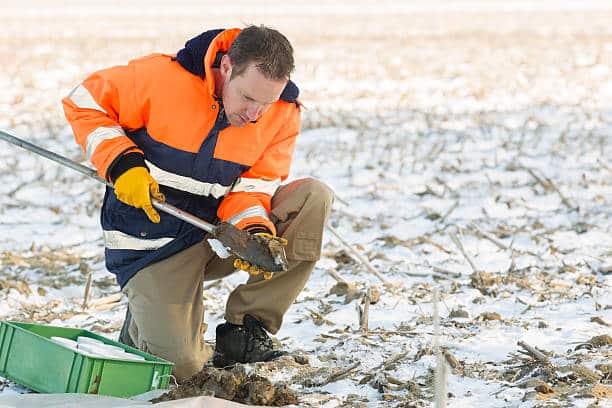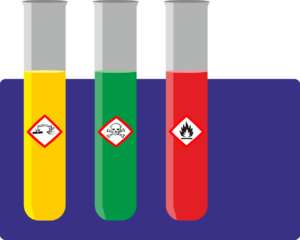Step-by-Step Guide to Conducting Effective Environmental Risk Assessments
To ensure environmental sustainability and compliance, effective environmental risk assessments are indispensable for organizations in Australia, especially those in high-impact sectors. Discover how to shield your business from environmental threats and align with health and safety standards through our step-by-step guide.
Identifying Environmental Hazards: A Comprehensive Approach
- Mapping Operational Activities: Begin by mapping out all operational activities. This helps in identifying areas where environmental impacts might occur, including the use of hazardous materials and processes that are potentially harmful.
- Engaging Stakeholders: Engage with stakeholders, including employees, local communities, and environmental experts, to gain a comprehensive understanding of potential environmental concerns. This collaborative approach ensures that all relevant environmental hazards are identified.
- Reviewing Historical and Regional Data: Analyze historical and regional data related to environmental incidents. This can provide insights into high risk areas and the types of hazards previously encountered, aiding in a more thorough hazard identification process.
- Legislative and Compliance Review: Examine local and national environmental laws and regulations. Understanding the legal framework helps in identifying compliance-related hazards, integral to environmental risk management.
- Utilizing Technology for Hazard Identification: Implement technology such as GIS mapping and environmental monitoring tools to identify hazards. These technologies can reveal hidden risks and ensure a more accurate assessment.
Assessing Exposure to Environmental Hazards
Quantitative and Qualitative Analysis: Use both quantitative and qualitative methods to assess the extent of exposure to identified hazards. Quantitative data might include emission levels, while qualitative assessments could involve expert opinions on potential risk levels.
- Scenario Analysis: Develop potential scenarios to understand the range of possible environmental impacts. This involves considering various outcomes based on different levels of exposure to hazardous materials and practices.
- Vulnerability Assessment: Assess the vulnerability of different environmental elements and populations to the identified hazards. This helps in understanding the potential impact on human health and the ecosystem.
- Impact Probability and Severity Rating: Rate the probability and severity of each identified risk. This helps in prioritizing risks based on their potential impact, guiding the focus towards managing those with higher levels of risk.
- Expert Consultation: Consult with environmental experts to validate the exposure assessment. Expert input ensures a comprehensive understanding of environmental impacts and the risk assessment process.
Characterizing and Evaluating Environmental Risks
Once the initial risk assessment and exposure evaluation are complete, the process of characterizing and evaluating environmental risks becomes crucial. This involves a deeper understanding of the nature and extent of the identified risks. Here are some additional key points to consider:
- Risk Impact Analysis: Evaluate the potential impact of the identified environmental risks on different ecosystems and human health. This involves understanding the scale of impact, from localized to widespread effects.
- Probability Assessment: Determine the likelihood of each risk occurring. This includes considering historical data, environmental conditions, and potential future changes that may influence risk probability.
- Severity Assessment: Assess the severity of potential impacts, considering both immediate and long-term effects on the environment and human health. This helps prioritize risks based on their potential to cause harm.
- Stakeholder Involvement: Engage with stakeholders, including local communities, employees, and regulatory bodies, to understand their perspectives and concerns about the environmental risks identified.
- Regulatory Compliance Review: Ensure that all identified risks are evaluated in light of current environmental laws and regulations. Compliance with legal standards is not only a legal obligation but also an ethical one.
Implementing Effective Environmental Risk Controls
With the risks identified and evaluated, the next step is to develop and implement strategies to manage these risks. The following strategies can be applied:
- Mitigation Strategies: Develop strategies to mitigate identified risks. This could include technological solutions, changes in operational processes, or adopting best practices to minimize environmental impacts.
- Preventive Measures: Implement preventive measures to avoid the occurrence of environmental risks. This may involve training staff, improving facility design, or adopting safer materials and technologies.
- Emergency Response Planning: Develop robust emergency response plans for potential environmental incidents. This includes having protocols in place for quick action to minimize harm in case of an incident.
- Continuous Improvement Programs: Establish continuous improvement programs that regularly review and enhance risk control measures based on the latest research and developments in environmental science.
- Monitoring Systems: Implement monitoring systems to track the effectiveness of risk controls and identify any new or evolving risks. These systems should provide real-time data and insights to facilitate prompt decision-making.
Monitoring and Reviewing Environmental Risk Assessments
The final step in the risk management process is ongoing monitoring and review. This ensures that the risk controls are effective and remain relevant over time. Regular reviews can identify new hazards or changes in existing risks, requiring adjustments to risk management strategies.Here are additional key aspects to consider:
- Establishing a Systematic Monitoring Protocol
A systematic monitoring protocol is essential in tracking the effectiveness of implemented risk controls. This involves setting up procedures to regularly monitor environmental parameters and indicators. This protocol should include specific metrics for assessing levels of risk and performance of risk mitigation measures, ensuring environmental risk management is proactive and responsive.
- Conducting Periodic Environmental Audits
Periodic environmental audits are crucial for assessing the compliance of operations with environmental regulations and internal policies. These audits help in identifying any new or previously unrecognized environmental hazards. Conducting these audits supports the organization’s commitment to health and safety, highlighting areas for improvement in managing hazardous materials and potential environmental impacts.
- Engaging in Stakeholder Feedback
Engaging with stakeholders, including employees, local communities, and regulatory bodies, provides valuable insights into the real-world effectiveness of risk management strategies. Stakeholder feedback can reveal potentially harmful practices or overlooked risks, contributing significantly to comprehensive environmental risk management.
- Updating Risk Assessments with Emerging Data
Environmental conditions and operational contexts are dynamic, so it’s important to update risk assessments with emerging data. This includes new scientific findings, technological advancements, or changes in regulatory frameworks. Keeping risk assessments up-to-date ensures that the organization is prepared for and can mitigate high risk scenarios effectively.
- Integrating Technological Tools for Real-Time Monitoring
Leveraging technological tools such as remote sensors and data analytics platforms can enhance real-time monitoring capabilities. These tools can provide immediate insights into environmental conditions, allowing for quick responses to any deviations from expected levels of risk. This technological integration is key in advancing the risk assessment process and ensuring ongoing environmental stewardship.
Partnering with iEnvironmental Australia for Comprehensive Environmental Risk Management
Conducting an environmental risk assessment is a dynamic and ongoing process. It’s crucial to approach this task with diligence and expertise to ensure that both the environment and human health are protected. At iEnvironmental Australia, we specialize in guiding organizations through this process, leveraging our experience and expertise to identify, assess, and manage environmental risks effectively.
For further insights or assistance in navigating the complex landscape of environmental risk assessments, do not hesitate to contact us at iEnvironmental Australia. Our team, comprised of seasoned consultants, possesses a wealth of experience and a deep understanding of both local and international environmental standards. We are dedicated to ensuring that your environmental responsibilities are managed effectively, efficiently, and with the utmost integrity and innovation.
Our approach is not just about compliance; it’s about going beyond the basics to provide you with strategic insights that can improve your operational efficiency and environmental stewardship. We work closely with our clients to understand their unique challenges and opportunities, offering tailored solutions that align with their specific needs and objectives.
Whether you’re dealing with a complex contamination issue, require guidance on environmental due diligence, or need expert advice for an ongoing project, our team is equipped to provide the support and expertise you require. We pride ourselves on our ability to deliver practical, innovative solutions that not only meet regulatory requirements but also add value to your business.
At iEnvironmental Australia, we believe that effective environmental management is integral to the success and sustainability of any organization. That’s why we are committed to partnering with you every step of the way, ensuring that your projects and operations not only comply with environmental regulations but also contribute positively to the environment and society.
Reach out to us today to learn more about how we can assist you in achieving your environmental goals and to discuss how our expert team can make a difference in your organization.


 Quantitative and Qualitative Analysis: Use both quantitative and qualitative methods to assess the extent of exposure to identified hazards. Quantitative data might include emission levels, while qualitative assessments could involve expert opinions on potential risk levels.
Quantitative and Qualitative Analysis: Use both quantitative and qualitative methods to assess the extent of exposure to identified hazards. Quantitative data might include emission levels, while qualitative assessments could involve expert opinions on potential risk levels.